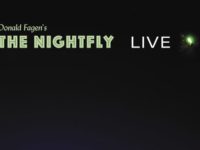Michael Leonhart’s new collaboration with JSWISS, titled Bona Fide, extends a lengthy period of collaborative brilliance that’s perhaps best defined by his lengthy musical partnership with Steely Dan. At the same time, he’s continued a celebrated parallel solo career. Leonhart joined Preston Frazier to discuss it all in the final installment of this two-part Something Else! Sitdown:
PRESTON FRAZIER: You’ve been in Steely Dan’s orbit since 1996. Now, you and your sister Carolyn Leonhart are the last two standing band members from the second phase of touring – which is remarkable.
MICHAEL LEONHART: Let’s not forget Catherine Russell, who was on the ’93 and ’94 tours. And I think part of why we’re still around this is that we never take it for granted. I never assume I’m going to be there. People who have gotten relieved of their duties are the ones who often like, “yeah, yeah, I got this,” and we’re cocky or we’re too comfortable in their position. You need particular alertness and specific energy, not a lot of nervousness but a realization that this could be the last show you ever do – so let’s make it count. If you keep on doing that, you’ll have a great show.
PRESTON FRAZIER: You handled most of the horn arrangements on 2000’s Two Against Nature by Steely Dan. How did that come about?
MICHAEL LEONHART: It was probably 1998, and they’ve been working on the album for two years. Not nonstop – they’d spend three months, and go to Hawaii and book sessions. And it was through the grapevine I heard things are being recorded in New York, too. It was pre-internet, so you didn’t hear the songs. You had to be in a studio to listen to things. [Steely Dan stalwart] Donald [Fagen] told me about the album, and I threw my hat in the ring to arrange stuff. He said, “Can you take rejection?” I said yeah, and he said, “I’m serious,” and I said “so am I!” A few weeks later, he told me he had stuff to write horns on and then I went to River Sound. [Steely Dan engineer] Roger Nichols was there, and they had finished a few basic tracks.
I came in the studio and they said to Roger and an assistant, “OK, just record.” We had an open 57 Shur microphone, and we’re talking through ideas. The basic structure of the song “Two Against Nature” was being worked out. There was a Wurlitzer piano in the studio, so I was playing the Wurlitzer, and I was coming from a Tom Scott/Victor Feldman [approach] in terms of voicings on the piano. I think [the late Steely Dan co-founder] Walter [Becker] said, “Hey Roger, just record this on to tape.” And so I did like two or three intros, some possible horn things and just comping. They used it on the album. It had that kind of Victor Feldman or Herbie [Hancock] ’70s approach to jazz and pop music, where you would respect the chord. I didn’t think they were going to use it, so I thought I might as well play whatever the fuck I wanted. I’m thinking we’re going to replace my intro with something else and then Walter was like, “No, no, it’s cool.”
PRESTON FRAZIER: I think Walter, Donald and you did “Gaslighting Abbie” together. Were the rest just you with Donald?
MICHAEL LEONHART: That’s right, for the most part. It would never be Walter and me. It was always either me and Donald, or Donald, Walter and myself.
PRESTON FRAZIER: Were the horns the last part to be recorded for the album?
MICHAEL LEONHART: Yeah, or maybe a little sweetening. We did a whole section with an entire session on “Two Against Nature” with alto flutes and a French horn, but there was an issue and it didn’t get kept. They said we’re going to redo that, so let’s bring everyone back, and I knew how much that would cost – like six hours recording the same musicians, pay them all again. But we had to redo it, so we did another session without the alto flutes. What I was thinking of was a [Henry] Mancini and Gil Evans thing, but they wanted to trim it down, so we did five or six horns.
This was in the final three months of recording and then Chris Potter came in to play those solos, and I was there to talk about if we needed additional parts. You could do it all together as a band but the Steely Dan albums, you have that rhythm section of five or six people and a scratch vocal – maybe you can keep the vocal. Then depending on the song, it would either be Donald finalizing his lead vocal or having a better lead vocal that’s mostly scratch. You get the background vocals that are final and then right around then, the horns are being written and you land the horns at the end of the process.
PRESTON FRAZIER: More recently, Steely Dan’s break opened up the door for other projects like Bona Fide.
MICHAEL LEONHART: Well, the idea of a break with Steely Dan is misleading. We typically do three to four months a year since 2007, but you never know for sure – because Donald’s mercurial. He’s open about it, so I think we’re we are going to tour next year. And it’s not planned out and set in stone. While I love playing with Donald – thank you, knock on wood, it’s been a while, and it’s part of a family – but I’ve always thought that I could be replaced. Everyone does.
PRESTON FRAZIER: Your year began with a touching orchestral project, The Normyn Suite.
MICHAEL LEONHART: It is such a special profound album for me because it’s about the dog dying, but it’s about more than that. It’s about selfishness versus actually taking care of something or someone else. It’s about loneliness, solitude and mortality.
PRESTON FRAZIER: How did Slow, your 2020 album with fellow Steely Dan collaborator Jon Herington, come about?
MICHAEL LEONHART: I worked with Jon Herington, so he and I got together a lot. It was really like I had found someone I connected with. I didn’t think I would ever want to do a duet album because even though I was very young, I knew that I didn’t like it when people over played so I didn’t have a desire to be with the great pianist or a guitar player that would just play tons of notes. I want someone that would be intimate and minimalist. I wanted to give him a chance to layer it. He was on board with the two different directions.
As I’m talking to you I realize that it’s not that far apart from the album my dad did with Joe Beck called, There’s Gonna Be Trouble. Half the album was Joe Beck on guitar and my dad on bass and singing. Half the album it’s my dad with his Juno-60 [synth]. That was the blueprint: You can do any kind of album you want as long as it sounds cohesive. Use these two different lanes, keep it very live. Things were kind of built up a little bit, and then we added a lot of elements. Jon was so wonderful on Slow.
PRESTON FRAZIER: I also want to talk about the first solo album by Jamie Leonhart, 2006’s Forward Motion.
MICHAEL LEONHART: I was producing her album before we really fell in love. It was an EP. I realized in the middle of producing that this woman is so beautiful and so electric and so just full of life and creativity. I think that I’m falling madly in love, but it’s not the time to tell her. We finished the album, and it was like two or three months afterwards before I confessed my love. I was very patient. And it was reciprocated and then we know we are getting married and then she wants to do the followup. I said I would love to, I’d love to produce and she’s about to do the arrangements. She said you really understand my voice. Again, my pleasure – and I had [2008’s] The Truth About Suffering.
Forward Motion, I think we did the basic tracking out of it studio in Brooklyn. It was a great studio with a mellotron, lots of older Ludwig and Slingerland drums and a great Neve mixing board. We did the tracking there, and then did some sweeping strings at my studio. Jamie is a poet. She’s so tuned in to lyrics and the meaning of the them. That’s the same way that my mother sings very naturally and doesn’t really think about. The lyrics just come out. You know that she gets the meaning of lyrics in a way that many singers just miss. She was an English major. She understands nuance and subtlety; that’s her secret weapon. There’s a new one coming out soon. We are releasing The Illusion of Blue in bits and pieces. It is taking a while to complete. It’s gorgeous. Jamie’s very careful about curating how she puts together these things.
PRESTON FRAZIER: Let’s go further back to the 2001 album Bein’ Green by your mother, Donna Leonhart.
MICHAEL LEONHART: That’s a deep one! We were sitting in [my parents’] kitchen. I had moved out. It was late 1999; I was 25 and at their apartment, and my mom said, “You know, I think I wanna record an album now,” and I said, “I think it’s great.” And then she said “Maybe you and dad [Jay Leonhart] could produce it” – and I said, “Well now, it’s a little less great.” I said, “Knowing how this works, I think you need to ask yourself over the next three or four weeks what’s right for you. It should be dad producing or me, but I don’t think it will be fruitful to have us both.” She said, “You know I spoke to dad, and I’m thinking about it, and I’d like you to produce it.” You don’t want too many cooks in the kitchen.
When we got to Manhattan Studio on 27th street, I remember there was a day when we came in, we had a six-hour session and she showed up on time, and she brought me some mail, and I said, “No Mom, it’s hard to play both parts [son and producer], could you give me mail at the end the session?” That was the first step in laying down the groundwork. Then about three weeks later, she said to me, “Michael, you’re not listening to me.” It was about the tempo of a song or something, and I realized she was right. Once we had those things in place, we were cooking. I had Chris Potter on bass clarinet too; it’s really a sleeper album. No one sings like her; she is genuine. That’s the secret sauce.
- Thelonious Monk – ‘Thelonious Himself’ (1957; 2025 vinyl reissue) - May 26, 2025
- Ben Tweedt – ‘Life Cycle’ (2025) - May 25, 2025
- Fernando Perdomo – ‘Waves 5’ (2025) - May 13, 2025




